 |
 |
 |
| |
Where is the greatest impact of uncontrolled HIV
infection on clinical disease progression?
|
| |
| |
CD4 & Viral Load Crucial for Preventing Non-AIDS Clinical Events - EuroSIDA
from Jules: this is a very interesting but I think complicated to follow study so the slides are below. Essentially this slide summarizes key points as I see it, that higher CD4 & undetectable viral load give one the best chance to avoid non-AIDS comorbidities (in this study they considered: ESRD, ES liver disease, CVD pancreatitis), however as you can see in this slide even those called at "low risk", >500 CD4 & <50 viral load still have a 71% increased risk for a non-AIDS event, but those at medium or high risk have much higher risk for developing comorbidities. OF COURSE, the authors summarize best in Implications Slide how to best avoid non-AIDS & AIDS events: Start ART as soon as HIV is diagnosed; Important to get all patients to as low a risk of clinical progression as quickly as possible; Retain patients in care and at low risk of clinical progression; and of course - Monitoring and managing comorbidities in all patients - and this study examines incidence across geographical regions in Europe and across ages & time/years.
Of course diet & exercise are the 2 best proven antidotes & preventers of comorbidities except for keeping viral load <50 & CD4 as high as possible, over 800 CD4 is preferable.
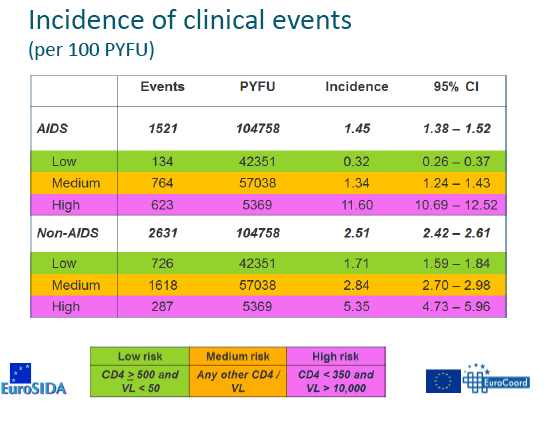
New AIDS and Non-AIDS Risk Varies With Age, Calendar Period in Europe
15th European AIDS Conference, October 21-24, 2015, Barcelona
Mark Mascolini
With AIDS and non-AIDS progression risk determined by CD4 count and viral load cutoffs, the greatest difference between high and low non-AIDS risk involved people under 30 years old, according to results of a 13,800-person EuroSIDA analysis [1]. Difference between high and low AIDS and non-AIDS risk widened over recent years, a finding the researchers believe indicates "continued improvements in clinical care for those at low risk and the need to improve clinical management for those whose HIV is not fully controlled."
Abundant research confirms that CD4 count and HIV load predict AIDS and non-AIDS diseases, the EuroSIDA team noted. But whether the predictive value of these markers varies with age or over calendar periods remains poorly understood. "Different patterns of clinical events," the researchers pointed out, "could identify those groups [needing] earlier intervention or closer monitoring." They performed this analysis to examine whether risk of new AIDS or non-AIDS disease with controlled or uncontrolled HIV differs by age, year of follow-up, or European region.
The analysis included EuroSIDA cohort members with follow-up after January 1, 2001. The investigators used Poisson regression analysis to figure risk of clinical events, including fatal or nonfatal AIDS and fatal or nonfatal non-AIDS diseases (non-AIDS cancer, end-stage renal disease, end-stage liver disease, cardiovascular disease, and pancreatitis). The researcher defined low risk as a CD4 count at or above 500 and a viral load below 50 copies, high risk as a CD4 count below 350 and a viral load above 10,000 copies, and medium risk as any other CD4 count or viral load.
The low-risk group included 2790 people (20% of study participants), the medium-risk group 9437 people (68%), and the high-risk group 1573 people (11%). About three quarters in all risk groups were men, and about 86% were white. Proportions who had started combination antiretroviral therapy were 97% with low risk, 82% with medium risk, and 69% with high risk. Median age stood at 41 in the low-risk group, 47 in the medium-risk group, and 38 in the high-risk group.
From 2001 through 2013, the proportion of low-risk EuroSIDA members rose steadily from about 20% to about 50%. The proportion of medium-risk people dwindled from about 70% in 2001 to about 40% in 2013. Eastern and central-eastern Europe and Argentina included somewhat higher proportions of high-risk people than southern, central-western, and northern Europe. Central-western and northern European had the highest proportion of low-risk people.
Overall incidence of AIDS diagnoses across the study period measured 1.45 per 100 person-years. AIDS incidence stood at 0.32 per 100 person-years in the low-risk group, 1.34 in the medium-risk group, and 11.60 in the high-risk group. Overall non-AIDS disease incidence measured 2.51 per 100 person-years, 73% greater than AIDS incidence. Non-AIDS incidence stood at 1.71 per 100 person-years in the low-risk group, 2.84 in the medium-risk group, and 5.35 in the high-risk group.
Poisson regression analysis adjusted for age, gender, ethnic origin, progression risk group, and other variables figured adjusted incidence rate ratios for AIDS and non-AIDS events according to age, calendar period, and region.
The age analysis grouped participants into four clusters--under 30, 30 to 40, 40 to 50, and over 50. Compared with people assigned a low risk of progression according to CD4 count and viral load, those assigned a high risk had more than a 10-fold higher incidence of a new AIDS diagnosis across all age groups, while those assigned a medium risk had less than a 10-fold higher AIDS incidence than the low-risk group. These adjusted incidence rate ratios (aIRR) for AIDS did not vary significantly across the four age groups.
But age group did have an impact on aIRR when the analysis shifted to new non-AIDS diagnoses. In the 30-and-under age group, those assigned a high risk by CD4 count and viral load had nearly a 10-fold higher aIRR for a non-AIDS disease than people assigned a low risk. That heightened aIRR for non-AIDS disease remained significant in the three older age groups, but at a much lower level than in the 30-and-under group.
For the calendar-period analysis, the EuroSIDA researchers divided follow-up years into four periods--2001-2004, 2005-2007, 2008-2010, and 2011 on. Across those four periods, people initially assigned a high risk by CD4 count and viral load had more than a 10-fold higher incidence of AIDS than the low-risk group, and those aIRRs rose slowly across calendar periods. Comparing the high-risk group with the low-risk group for non-AIDS disease incidence, the researchers also found a slow rising incidence across the 4 calendar periods. These aIRRs comparing non-AIDS incidence in the high-risk group and the low-risk group were statistically significant in every calendar period but well below 10-fold in every period.
The EuroSIDA team summarized their analysis by focusing on the difference between the high-risk group and the low-risk group:
By age:
-- The difference between high and low risk for AIDS was similar across age groups.
-- The difference between high and low risk for non-AIDS decreased as people aged.
By year of follow-up:
-- The difference between high and low risk for AIDS increased in later years.
-- The difference between high and low risk for non-AIDS increased in later years.
By region:
-- The difference between high and low risk for AIDS was similar across regions.
-- The difference between high and low risk for non-AIDS was highest in central-eastern and eastern Europe and lowest in central-western and northern Europe.
The investigators proposed that the wider difference for non-AIDS progression in people under 30 years old suggests that other progression factors become more important than HIV control as people age. The increasing difference in risk of both AIDS and non-AIDS disease over calendar periods suggests "improvements in care for those at low risk and better management required for those at high risk." Regional differences in non-AIDS progression risk, they surmised, may point to differences in patient management and socioeconomic factors.
The EuroSIDA researchers believe their findings reinforce advice to start antiretroviral therapy "as soon as HIV is diagnosed . . . to get all patients to as low a risk of clinical progression as quickly as possible." They suggested their data also underline the need to monitor and manage comorbidities in everyone with HIV.
Reference
1. Mocroft A, Laut K, Reiss P, et al. Where is the greatest impact of uncontrolled HIV infection on clinical disease progression? 15th European AIDS Conference, October 21-24, 2015, Barcelona. Abstract PS8/6.
----------------------
Reported by Jules Levin
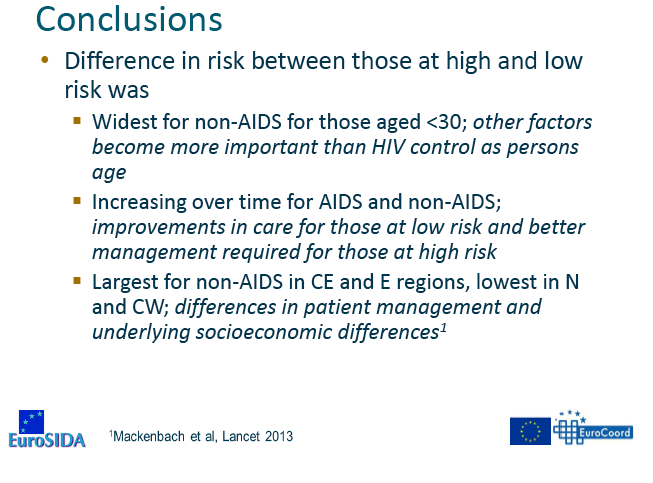
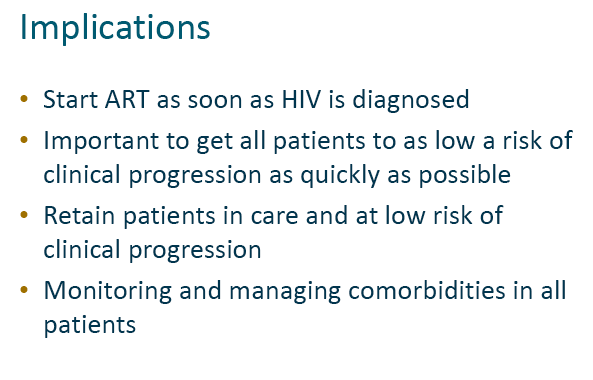
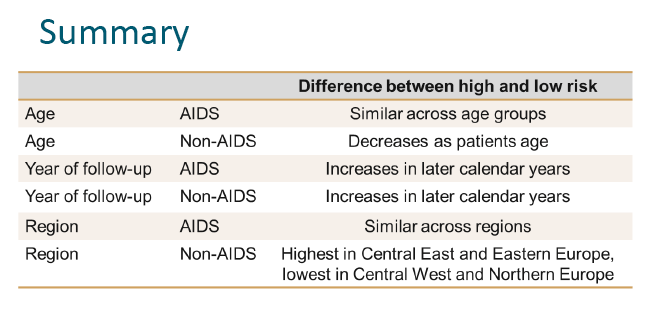
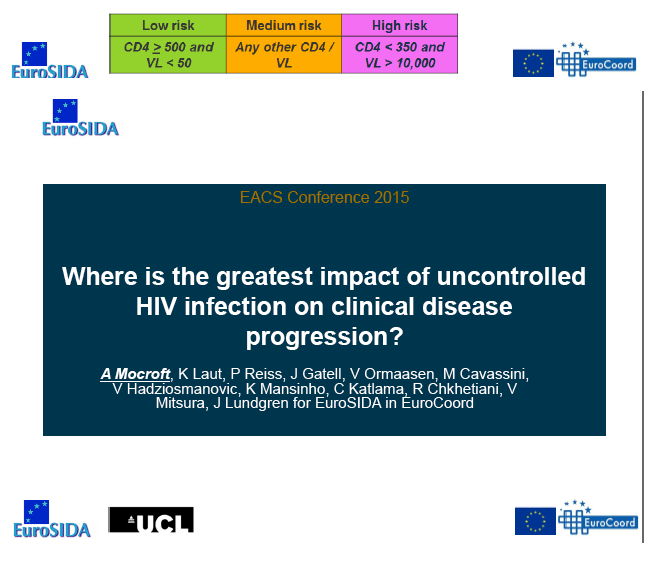
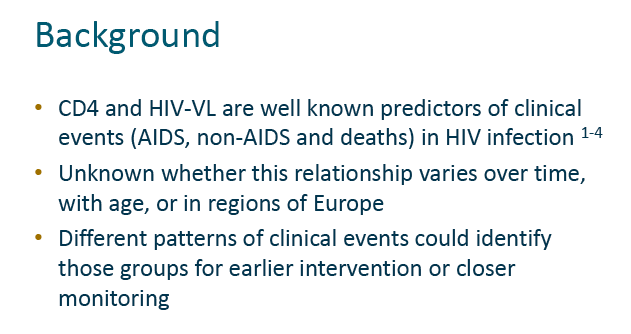
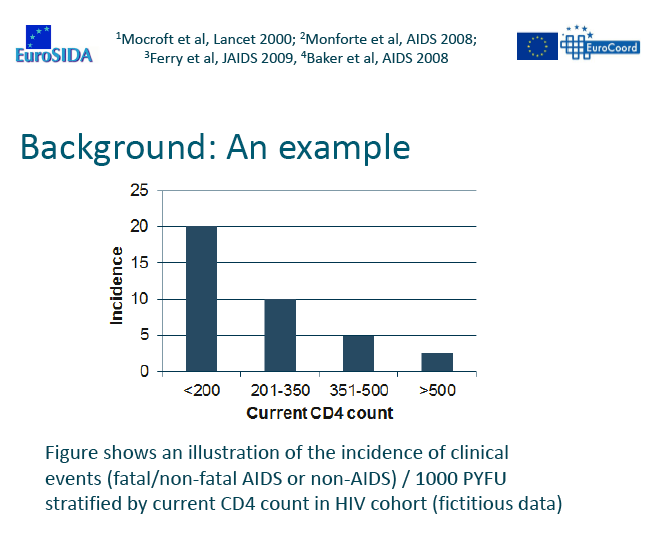
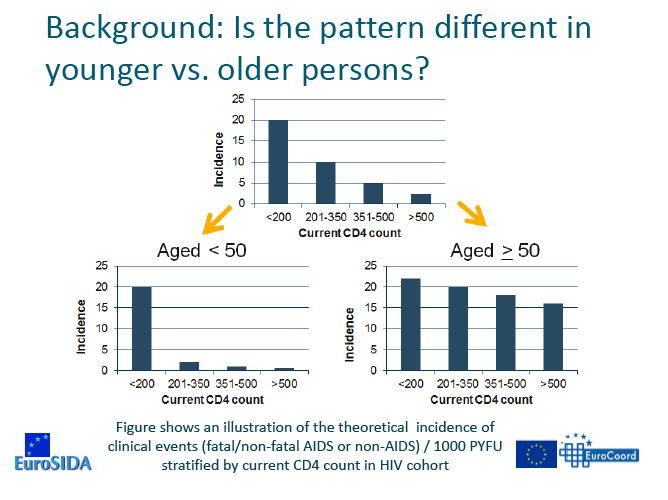
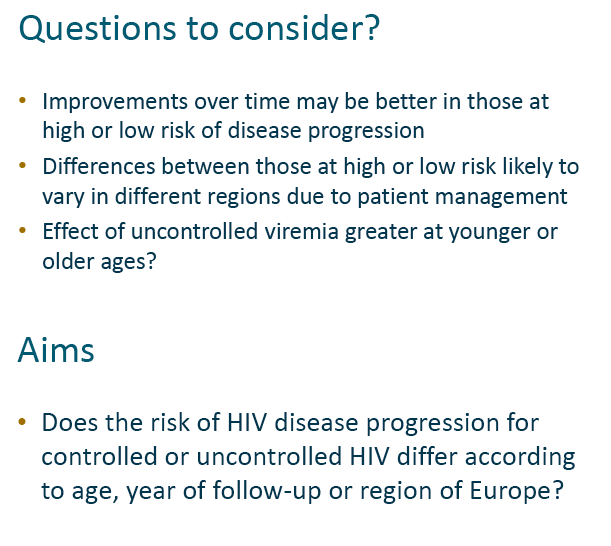


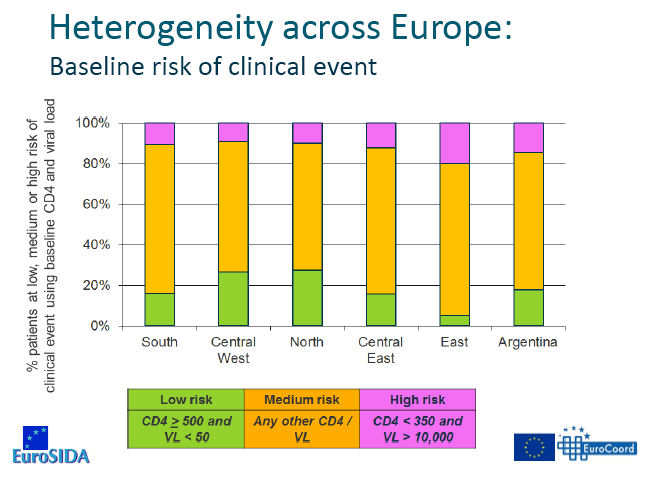
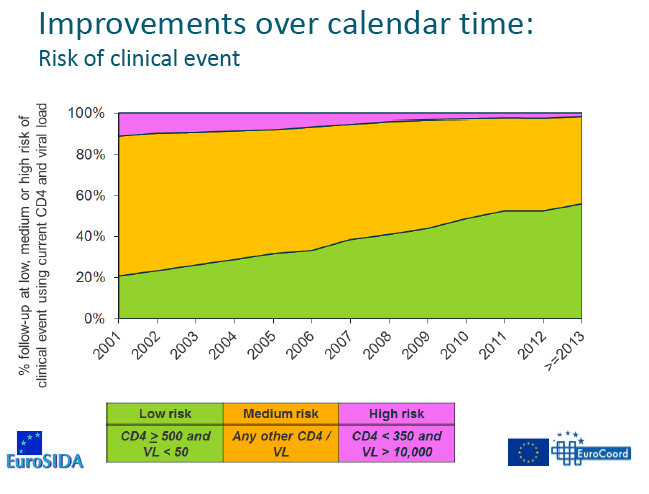




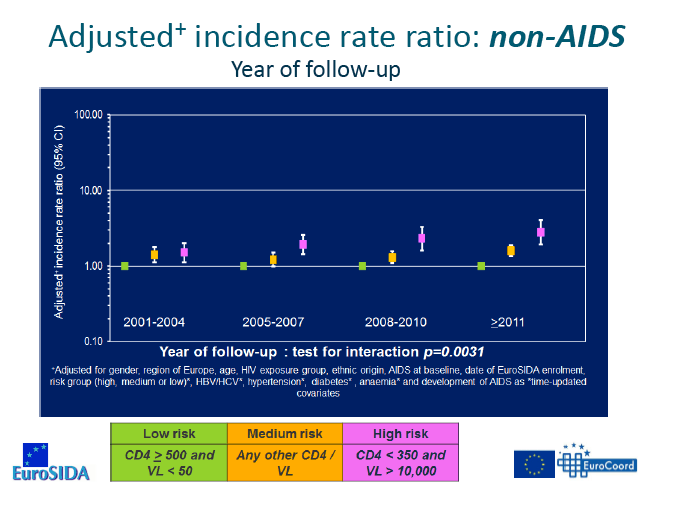
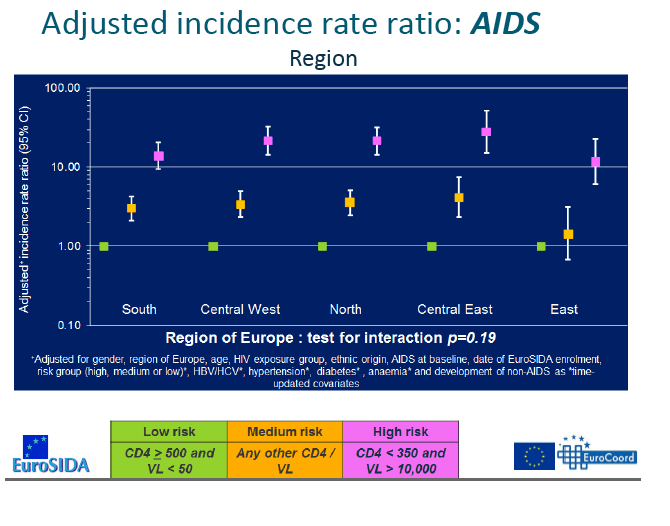
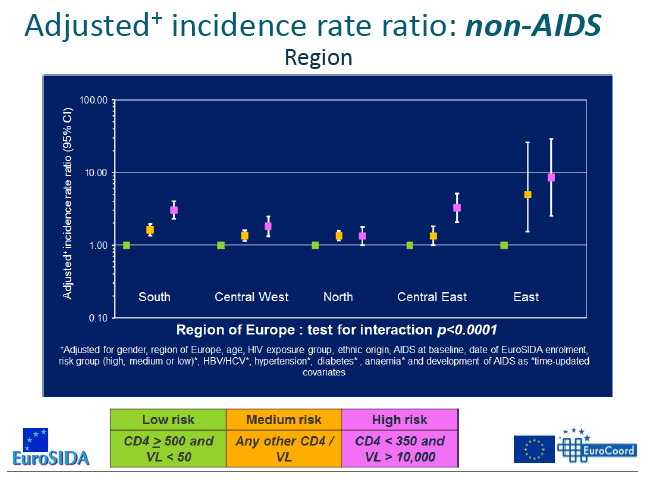
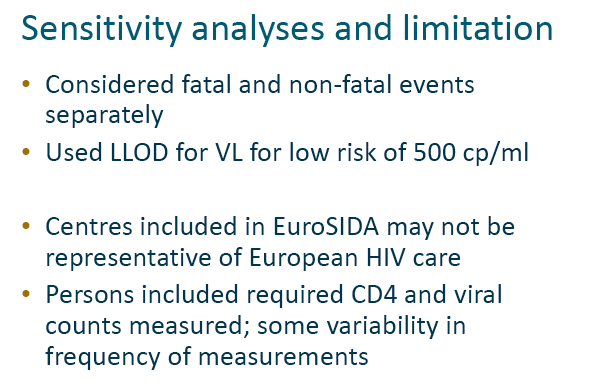
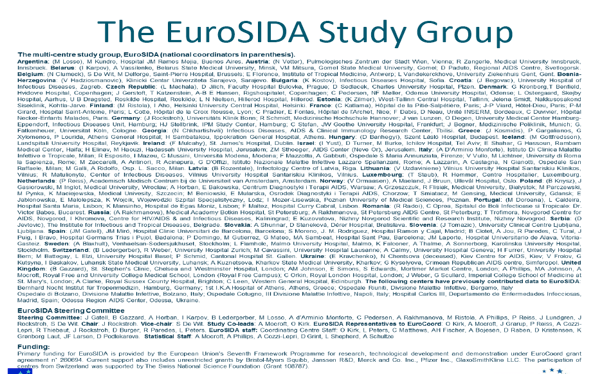
|
| |
|
 |
 |
|
|